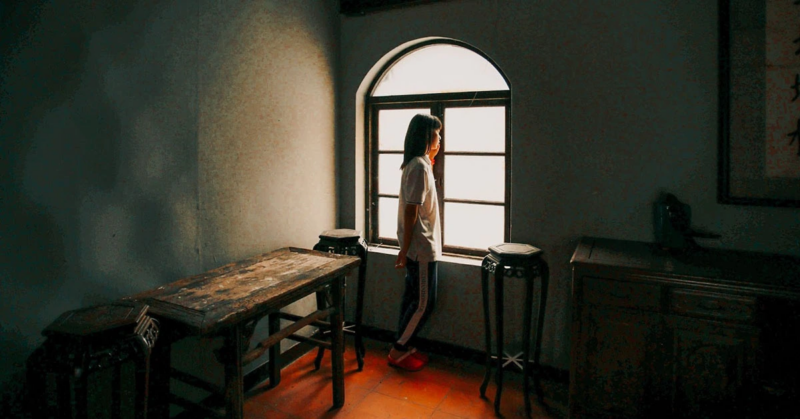
What is Seasonal Affective Disorder? (Symptoms, Causes, and Treatment)
7 min.
Seasonal Affective Disorder is a recurrent form of major depression that typically begins in the fall and improves during spring and summer. Read to learn more about the symptoms, treatments, and other facts about SAD.
May 4, 2022
Table of Contents
Year after year the seasons change, and for many of us, so do our moods. Shorter days, colder weather, the retreating sun—all of that can influence how we feel. And while it’s common for our moods to fluctuate as one season transitions to another, you could be experiencing something called seasonal affective disorder if your feelings go beyond the winter blues.
First reported by Dr. Norman Rosenthal in the early 1980s, seasonal affective disorder (SAD) is a recurrent form of major depression that typically begins in the fall and improves during spring and summer. Although much less common, it’s also possible to experience something called summer depression in which symptoms start in late spring to early summer.
Each year, approximately five percent of the U.S. population experiences SAD, with symptoms present for nearly half (40 percent) of the year. SAD affects more women than men, and is most commonly diagnosed in young adults aged 18-30 years.
Seasonal affective disorder can be manageable with access to the right resources and information. Below, we’ll review symptoms, causes, and treatments to help you better prepare for the next season.
Seasonal affective disorder signs and symptoms
SAD is a subtype of major depression, meaning both SAD and major depression share similar signs and symptoms, according to the National Institute of Mental Health. However, a primary difference is that SAD symptoms last for 4-5 consecutive months as opposed to two or more weeks.
Symptoms of seasonal affective disorder include:
- Feeling depressed most of the day, nearly every day, for 4-5 months
- Losing interest in activities or hobbies
- Changes in appetite or weight
- Fatigue
- Agitation
- Hopelessness
- Low energy
- Difficulty concentrating
- Frequent thoughts of death or suicide
- Problems with sleep
Winter-pattern SAD versus summer-pattern SAD
Winter-pattern SAD typically means less exposure to sunlight so it can cause people to feel sluggish and lethargic. Specific winter-pattern SAD symptoms include:
- Oversleeping
- Overeating
- Weight gain
- Social withdrawal
Although much less common, some people may experience depressive and/or manic episodes during the spring and summer months, also known as summer-pattern SAD. Symptoms include:
- Trouble sleeping
- Poor appetite and weight loss
- Restlessness and agitation
- Anxiety
- Violent behavior
Seasonal affective disorder causes and risk factors
Sunlight seems to play a critical role in the development of seasonal affective disorder. With winter-pattern SAD, people don’t get enough sun. With summer-pattern SAD, there’s too much. As far as researchers can tell, the sun influences winter-pattern SAD in three ways: a decreased production of serotonin, an increased production of melatonin, and irregular circadian rhythms.
Serotonin and SAD
Serotonin is a neurotransmitter that regulates sleep, mood, and appetite. One theory is that people with SAD are unable to properly regulate serotonin, also known as the “feel-good” chemical. Research from a few years ago found that those with SAD had 5 percent more SERT, a protein that assists with serotonin transport, during the winter than in summer. That may sound like a good thing, but higher SERT levels actually lead to lower serotonin activity which can then contribute to symptoms of depression.
Melatonin and SAD
Further research suggests that people with SAD produce too much melatonin—a hormone that regulates and enhances sleep. Melatonin is produced by the pineal gland and helps to regulate our sleep-wake cycle with night and day so that we get ample amounts of rest. An overproduction of melatonin, however, can cause us to feel too sleepy. During the winter months when the nights are longer, some people might produce too much melatonin which can cause SAD symptoms like drowsiness, fatigue, and low energy.
Circadian Rhythms and SAD
A circadian rhythm is the body’s 24-hour cycle that responds to the changes between day and night and keeps your body running smoothly. The lack of sunlight during winter months can potentially interfere with the body’s internal clock and lead to symptoms like depression and low energy levels.
Other possible risk factors for SAD include:
- Age (SAD is most prevalent among those aged 18-30 years)
- Being female
- Family history of SAD or major depression
- Living at a more northern latitude
- SAD is also more common in people with bipolar disorder and other mental health conditions like attention deficit hyperactivity disorder, eating disorders, and anxiety disorders.
Seasonal affective disorder diagnosis and treatment
There isn’t a specific set of criteria for diagnosing SAD, so your healthcare provider will likely utilize several tools to understand if you have the condition. To start, they’ll conduct a physical exam and order blood work to rule out any underlying health problems that could be responsible for the symptoms. For example, tests like a thyroid panel or complete blood count (CBC) are useful for identifying medical conditions that could cause fatigue, depression, or weight changes.
You’ll also be asked to complete a self-reported questionnaire so that your provider can better understand your symptoms, feelings, and behaviors as they relate to SAD. Some of the more commonly used questionnaires include the Seasonal Pattern Assessment Questionnaire (SPAQ) and the Beck Depression Inventory.
Fortunately, there are several proven treatment options for alleviating symptoms associated with SAD.

Light therapy
Also known as phototherapy, light therapy has been used to treat winter-pattern SAD since the 1980s. As you can probably guess, the idea is to use the bright light in order to compensate for shorter days with less sunshine.
While you may be skeptical at first, research shows that people with winter-pattern SAD noticed an improvement after just one or two weeks of light therapy. Ready to try it? Here’s how it works.
- Light boxes use a measurement called lux to indicate the intensity of the light. You’ll want to find a light box with 10,000 lux of white, fluorescent light.
- For maximum effectiveness, it’s best to spend 30 minutes in front of the light box each day—ideally right when you wake up. Most light boxes come with a timer so you don’t have to worry about watching the clock.
- This practice may sound blinding, but most people can tolerate it just fine as long as they don’t look directly into the light. In fact, it’s common to use the 30 minutes to finish homework, listen to a podcast, or read a book.
Therapy
Evidence-based treatment practices like cognitive behavioral therapy (CBT), dialectical behavior therapy (DBT) skills, and mindfulness practices are beneficial for those affected by SAD. Researchers who published two studies on the effect of light therapy and cognitive behavioral therapy on SAD found that a combination of light therapy and CBT reduced depressive symptoms and improved remission rates. The second study even found that CBT, with or without adjunct light therapy, reduced depression during the following winter compared with light therapy alone.
Antidepressants
Antidepressants are medications that are prescribed to treat different types of depression, including seasonal affective disorder. There are several categories of antidepressants, but serotonin reuptake inhibitors (SSRIs) are most often used to alleviate SAD symptoms and prevent depression from returning.
Proactive approaches to winter-pattern SAD
If you’re living with SAD, the cyclical nature of the condition can be used to your advantage. As a reminder, symptoms tend to start at the same time each year and last for 4-5 months so it’s possible to plan ahead. Here are a few ideas to help prepare yourself:
- Begin light therapy at the end of the summer before the onset of symptoms (for winter-pattern SAD).
- Fill your schedule well in advance so that you have several weeks of activities to look forward to, such as a new art class, book club, or walking group with friends.
- Even before your symptoms set in, participate in a mental health treatment program. Whether it’s a private session with your clinician or group therapy, speaking with others provides a foundation so that you feel comfortable and supported even during your off season.
- Remember to be kind to yourself. As you head into the fall, create time to focus on your coping methods and positive self talk. Research shows that positive attitudes can lead to better mental health and overall state of being.
Learn how Charlie Health can help
It’s common to experience changes in your mood as the seasons transition from one to another—however, it’s important to recognize if your symptoms are worsening, especially during the same time each year.
Charlie Health is committed to providing teens and adolescents with a proactive approach to mental wellness—all from the comfort of their home. Our intensive outpatient program is completely virtual which means that we can connect you with other people experiencing seasonal affective disorder or other types of depression no matter where you live.
To learn more, read our blog about other types of depression in teens and young adults here.
References
https://www.apa.org/topics/depression/seasonal-affective-disorder
https://www.aafp.org/afp/2012/1201/p1037.html
https://pubmed.ncbi.nlm.nih.gov/33252911/
https://www.charliehealth.com/post/what-is-major-depressive-disorder-symptoms-causes-and-treatment
https://www.nimh.nih.gov/health/publications/seasonal-affective-disorder
https://www.sciencedaily.com/releases/2014/10/141020212412.html
https://www.nigms.nih.gov/education/fact-sheets/Pages/circadian-rhythms.aspx#
https://www.maturitas.org/article/S0378-5122(15)00606-4/fulltext
https://www.jopan.org/article/S1089-9472(03)00004-2/fulltext
https://www.ncbi.nlm.nih.gov/pmc/articles/PMC8123881/
https://pubmed.ncbi.nlm.nih.gov/22277151/
https://www.charliehealth.com/how-it-works
https://pubmed.ncbi.nlm.nih.gov/15207942/
https://pubmed.ncbi.nlm.nih.gov/17563165/





